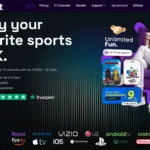Have you ever caught yourself taking a slightly longer route just to maintain your streak on a fitness app? Or felt a rush of satisfaction after earning a new badge in a navigation app? You’re not alone. Travel and navigation apps have mastered the art of gamification, turning mundane daily activities into engaging experiences that keep us coming back for more.
The Dopamine-Driven Design
Gamification in travel apps isn’t accidental—it’s carefully engineered to tap into our brain’s reward system. Every time you earn points, unlock a new level, or receive a badge, your brain releases dopamine, the same neurotransmitter associated with pleasure and motivation. App developers understand this neurological response and design features that trigger these chemical rewards repeatedly.
Consider how navigation apps have evolved beyond simple directions. Modern apps reward users for contributing to the community, whether through reporting traffic incidents, editing maps, or simply using the app consistently. These reward systems in apps like Waze’s point structure transform passive users into active participants, creating a sense of investment and ownership in the platform. The genius lies in making the journey itself rewarding, not just the destination.
Why Competition Drives Engagement
Leaderboards and ranking systems exploit our innate competitive nature. When you see that you’re in the top 10% of users in your region, it triggers a desire to climb higher. This social comparison isn’t necessarily negative—it can motivate positive behaviors like safer driving, more accurate reporting, and community contribution.
Travel apps leverage this by creating tiered systems where users progress from beginners to experts, warriors to royalty. Each tier unlocks new privileges or recognition, making the climb feel meaningful. The psychological principle at play is called “goal gradient effect”—we accelerate our efforts as we get closer to a goal. When you’re just 50 points away from the next level, you’re more likely to actively engage with the app to bridge that gap.
The Streak Effect and Habit Formation
Maintaining streaks has become one of the most powerful motivators in app design. Whether it’s checking in daily, logging workouts, or using navigation apps consistently, streaks create a fear of loss that can be more motivating than the promise of gain. Breaking a 100-day streak feels devastating, even though the streak itself has no tangible value.
This psychological principle, known as loss aversion, keeps users returning daily. Travel apps that implement streak mechanics see dramatically higher retention rates. Users who might otherwise switch between multiple navigation apps stick with one to maintain their progress and accumulated rewards.
Virtual Status and Digital Identity
The badges, avatars, and titles we earn in apps become part of our digital identity. Displaying a rare achievement or high-level status serves as social proof within the community. It signals expertise, dedication, and insider knowledge—all socially valuable currencies, even in virtual spaces.
This is why many users carefully curate their in-app profiles and proudly display their achievements. The virtual status translates to real-world credibility. A “Waze Knight” or high-level contributor isn’t just playing a game—they’re building reputation within a community of millions.
The Collection Mentality
Humans are natural collectors. Whether it’s stamps, coins, or digital badges, the desire to complete a collection drives behavior. Travel apps that offer multiple achievement categories tap into this collecting instinct. Users find themselves trying new features or exploring different aspects of the app simply to earn that elusive badge.
This “gotta catch ’em all” mentality transforms casual users into power users. Someone who downloaded a navigation app just for directions suddenly finds themselves editing maps, adding photos of locations, and reporting gas prices—all to complete their achievement collection.
Community and Belonging
Gamification creates micro-communities of engaged users who share common goals. These communities form around specific achievements, regional competitions, or contribution levels. The sense of belonging to something larger than yourself adds emotional value to what would otherwise be a transactional relationship with an app.
When users see their contributions acknowledged—whether through points, rankings, or community recognition—they feel validated and valued. This transforms the app from a utility into a platform where they have meaningful participation.
The Dark Side of Digital Rewards
While gamification drives engagement, it’s worth acknowledging potential downsides. Some users develop compulsive behaviors around earning points or maintaining streaks, using apps even when not beneficial. The fear of falling behind in rankings can create unhealthy stress.
Additionally, the focus on gamified metrics sometimes overshadows the app’s primary purpose. Users might prioritize point-earning activities over optimal navigation choices, or report incidents for points rather than genuine helpfulness. App developers must balance engagement mechanics with user welfare and authentic utility.
Making Gamification Work for You
Understanding the psychology behind gamification helps you use these apps more intentionally. Recognize that points and badges are designed to engage you, not define your worth. Set personal boundaries around app usage and don’t let digital rewards drive real-world decisions that don’t serve you.
Use gamification features as gentle motivation for positive behaviors—like safer driving or community contribution—but don’t let them become obligations. The moment an app’s reward system creates stress rather than enjoyment, it’s time to reassess your relationship with it.
The Future of Travel App Engagement
As technology evolves, so will gamification strategies. We’re already seeing augmented reality features, personalized challenges based on user behavior, and social elements that connect users beyond the app itself. The key for developers will be creating engagement that feels authentic and valuable rather than manipulative.
For users navigating this landscape, awareness is power. Understanding why you feel compelled to earn that next achievement or maintain that streak helps you make conscious choices about your app usage. Travel apps should enhance your journey, not hijack it. If you’re curious about how different navigation platforms implement these engagement strategies, Wavy Destinations offers detailed insights into the features and mechanics that make modern travel apps so compelling.
The gamification of travel apps reflects a broader trend in how we interact with technology. These digital rewards tap into fundamental human psychology, creating experiences that are genuinely engaging. The question isn’t whether to participate, but how to do so mindfully, letting these features enhance rather than control our relationship with technology.


